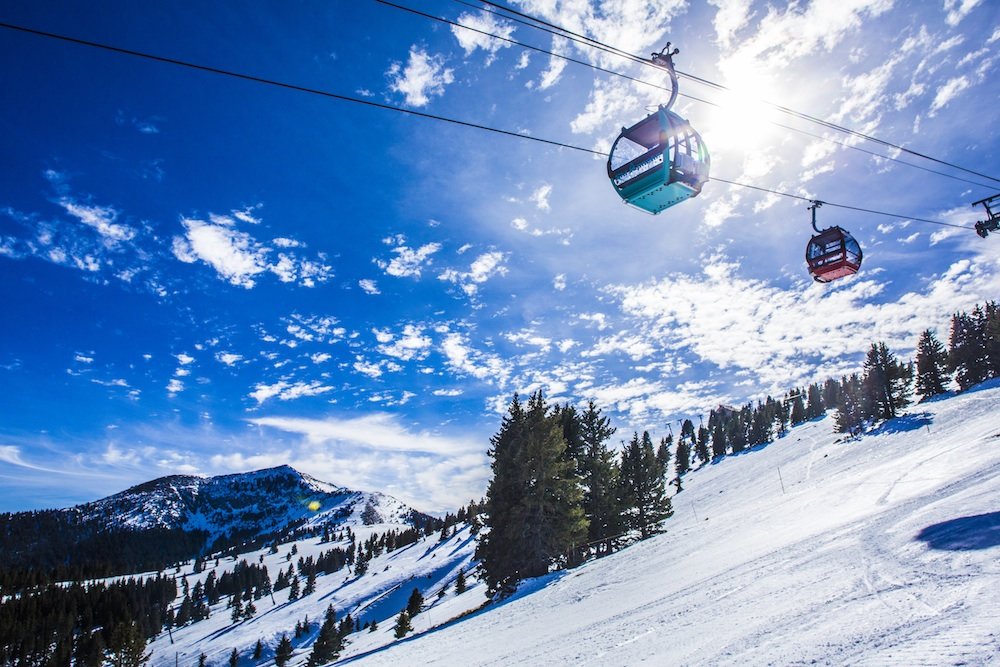
There are thousands of ski resorts throughout the world and in some pretty bizarre locations. Did you know you can go skiing in Israel? Morocco also has some world-class skiing at Oukaimeden. Seems like as long as there are cold winter temperatures, ample snow, and a hill, people are going to go skiing down it. Many places you wouldn’t guess meet those criteria. Generally, in the northern hemisphere, the farther north you are and the higher in elevation you go, the more annual snowfall you’re going to get. But there are many locations where you can score some powder that stretches pretty far south.
In the U.S., you can go skiing in states like Arizona, Missouri, New Mexico, North Carolina, and Tennessee. These states benefit from the Southern Rocky Mountains and the Appalachian Mountains. Their elevation and terrain bring enough snowfall and wilderness to build some top-notch ski resorts. So today, we break down some of these more unexpected locations for ski resorts in America and analyze the five most southern ones.
5. Snow Valley, Running Springs, CA.
Latitude: 34.22, Longitude: -117.04
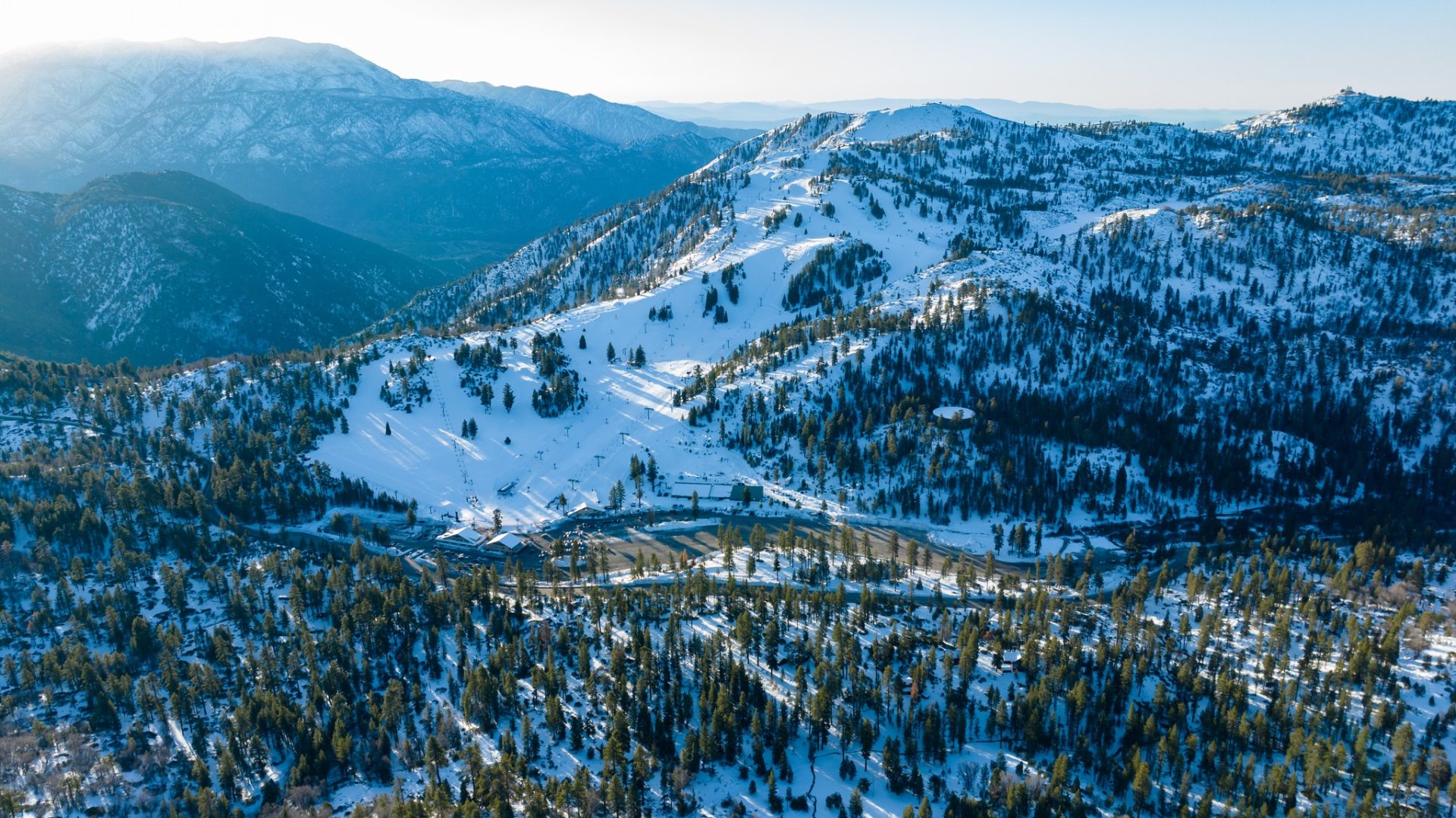
The three resorts of Snow Valley, Bear Mountain Resort, and Snow Summit are part of Big Bear Mountain Resorts in the San Bernardino National Forest. All three are relatively at the same latitude position, but Snow Valley is ever so slightly (by less than 1,000 ft.) more south, making it the fifth most southern resort in the U.S. While Snow Valley is the smallest of the three at only a 1041′ vertical drop, it is the closest ski area of the three to the LA area and offers 28 trails serviced by 12 lifts with night skiing available on Fridays and Saturdays. The resort only receives about 100 inches of snowfall annually. The lack of natural snowfall means Snow Valley relies heavily on man-made snow to cover its terrain.
Just about two from Los Angeles, Snow Valley is a popular destination, especially for freestyle skiing and snowboarding. Given the proximity to Los Angeles and the Pacific Ocean, Big Bear Resorts are championed spots for the “California Double,” where you surf and ski/snowboard in the same day. Although Snow Valley is not the easiest option for the California Double, it is one of the more popular options since Big Bear retains snow into the early spring and gives more comfortable ocean temperatures.
At a glance:
-
Price for adult day pass starts at: $79
-
Price for kids day pass starts at: $36
-
Ski Hours: 9:00 AM-4:00 PM. (Night skiing is available on weekends)
- Average annual snowfall: 100 inches
- 28 Trails:
-
Easy: 10%
-
Intermediate: 66%
-
Difficult: 24%
4. Sunrise Park Resort, Greer, AZ.
Latitude: 33.97, Longitude: -109.57
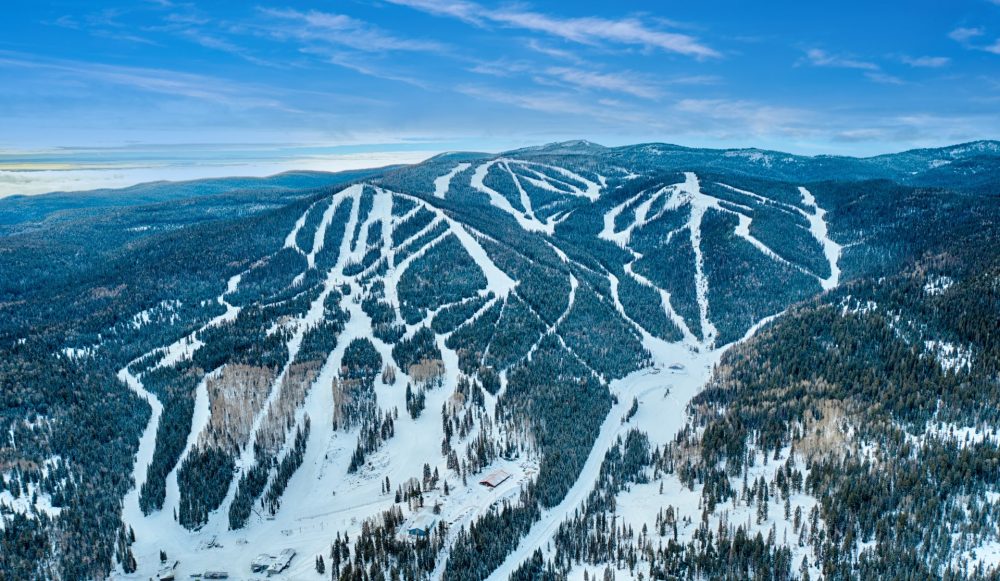
At the fourth most southern, Sunrise Park Resort in Greer, AZ, consists of three mountains named Sunrise Peak, Cyclone Circle, and Apache Peak. In total, the three peaks have over 1,200 acres of skiable terrain across 65 trails and seven lifts, making it the largest ski resort in Arizona. From peak to base, there is approximately 1,800 ft. of vertical descent, and the area receives, on average, 200 inches of snow annually. Seasons generally last from mid-December to mid-March. The resort is owned and operated by the White Mountain Apache Tribe.
Greer is in a remote part of Arizona, making dining and lodging options few and far between. For dining, there are various day lodges and cafes scattered throughout the mountain. The resort also offers the Sunrise Park Lodge at the mountain base as a place to sleep. Other lodging options are in the towns of Eagar and Pinetop-Lakeside, both around 30-45 minutes away from the resort.
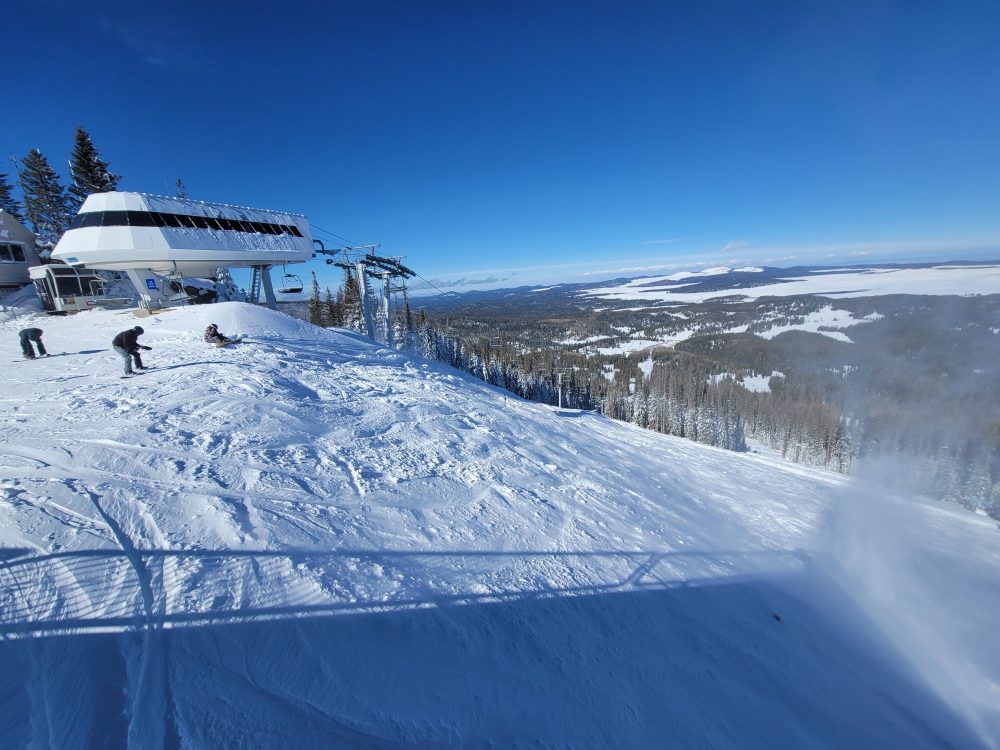
At a glance:
-
Price for adult day pass: $65. (Senior discounts available)
-
Price for kids day pass: $44.
-
Ski Hours: 9:00 AM-4:00 PM (Night skiing available on certain weekends)
- Average annual snowfall: 200 inches
-
1,200 Skiable acres across 65 Trails:
-
Easy 45%
-
Intermediate 28%
-
Difficult 27%
-
3. Ski Apache, Ruidoso, NM.
Latitude: 33.39, Longitude: -105.79
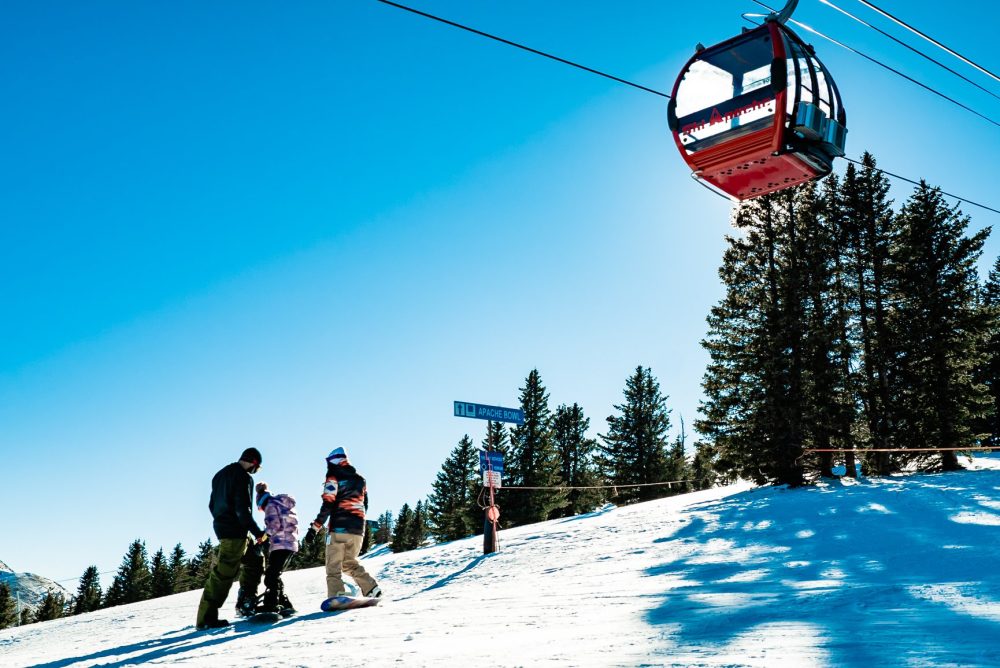
In the southeast part of New Mexico sits the third-most southern resort in the U.S., Ski Apache. The resort sits in the Sacramento Mountain Range near the town of Ruidoso, NM. Out of the top three most southern resorts, Ski Apache is by far the biggest, with 750 skiable acres across 55 trails. Trails have approximately 1,900 ft. of vertical descent from the 11,500 ft. summit to the mountain base sitting at 9,600 ft. of elevation. Ski Apache has eight total lifts, including an eight-person gondola that transports you from the base to the very top of the mountain.
The Sacramento Mountains receive an average annual snowfall of 180 inches a year. The area is known for getting large snowstorms that dump over two feet of snow, which adds some challenges to the drive up the 12-mile-long windy road from Ruidoso to the resort. When snow levels are low, Ski Apache has the ability to make its own snow on a select number of trails. Seasons generally last between mid-December through mid-March.
For a more detailed overview of Ski Apache, check out SnowBrains’ own Hometown Mountain Shoutout of Ski Apache.
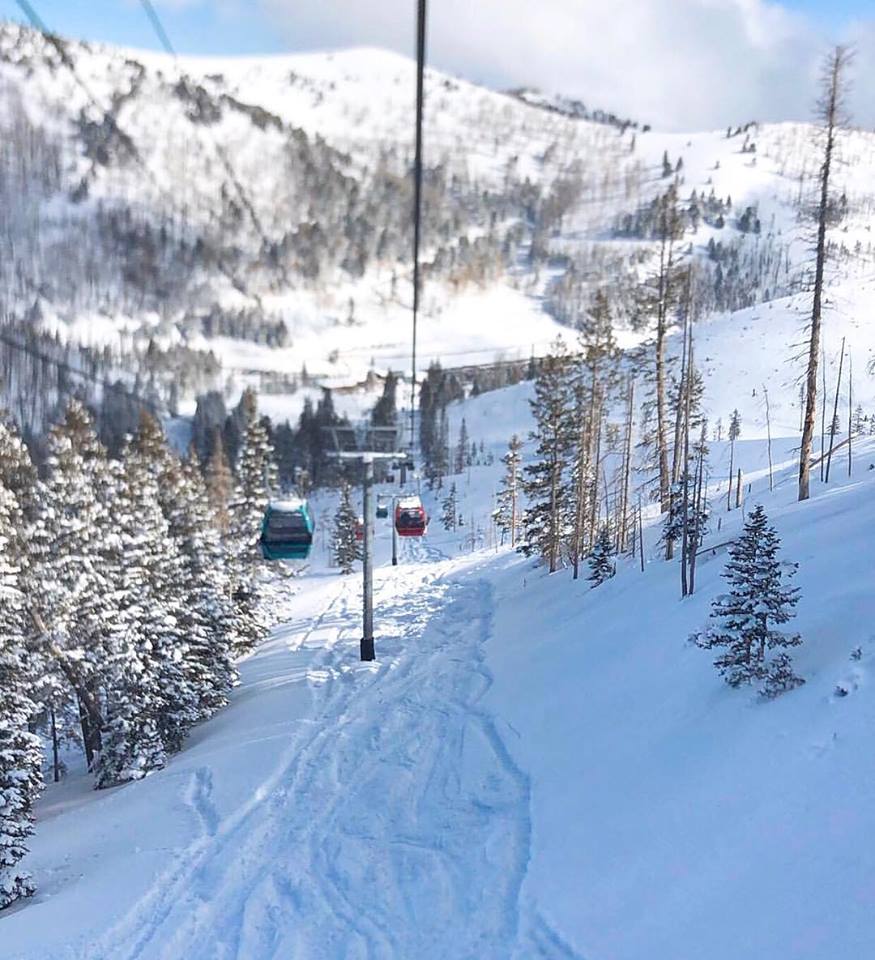
At A Glance:
-
Price for adult day pass: $90 ($54 Half-Day). (Military and Senior discounts available)
-
Price for child day pass: $70 ($52 Half-Day)
-
Ski Hours: 10:30 AM-4:00 PM Mon, Thur & Fri. (Weekends: 9:00 AM-4:00 PM)
- Average annual snowfall: 180 inches
2. Ski Cloudcroft, Cloudcroft, NM.
Latitude: 32.95, Longitude-105.74
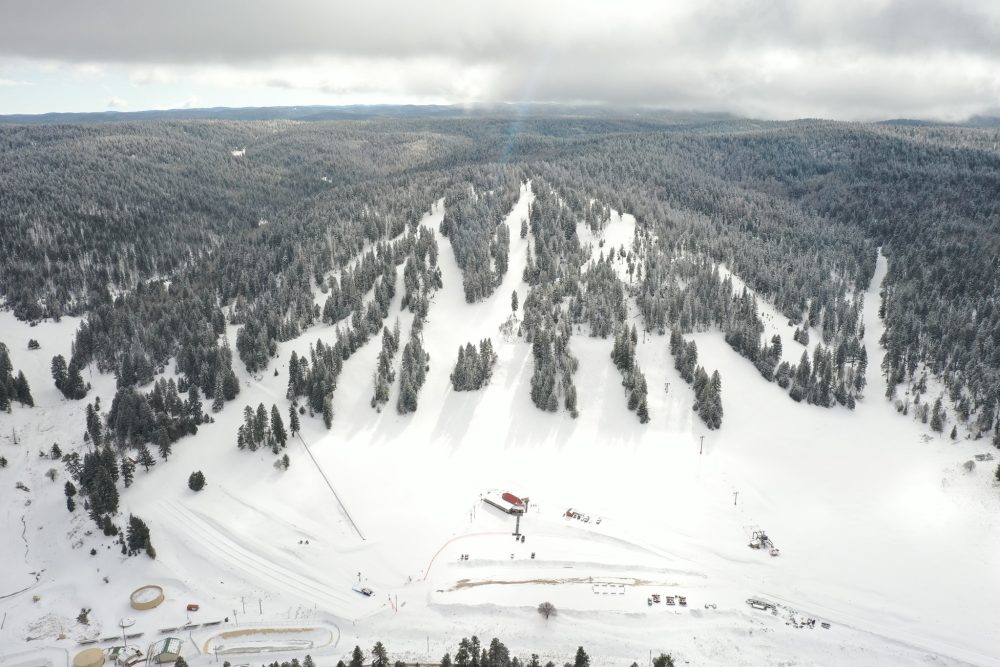
The second most southern ski resort in the U.S. belongs to Ski Cloudcroft of Cloudcroft, NM. Topping out at ~9,100 ft., Ski Cloudcroft sits along the Sacramento Mountain Range in Otero County, NM. The resort has around 74 skiable acres, which encompass 25 trails with varying difficulty and three different lifts to get you to the top of the slopes.
The surrounding areas average only about 120 inches of snow each year, but the resort does make its own snow when precipitation levels are low. Seasons generally last from mid-December to mid-March. The resort offers one restaurant for dining options at the base of the mountain and no lodging. The neighboring village of Cloudcroft, NM (about two miles from the resort) has multiple dining and lodging options nearby.

At a glance:
- Price for adult day pass: $55 ($45 Half-Day).
- Price for child day pass: $45 ($55 Half-Day)
- Ski Hours: 9:00 AM-4:00 PM
- Average annual snowfall: 120 inches
- 74 Skiable acres across 25 Trails:
- Easy 34%
- Intermediate 30%
- Difficult 36%
1. Mt. Lemmon Ski Valley, Mt. Lemmon, AZ.
Latitude: 32.45, Longitude: -110.79
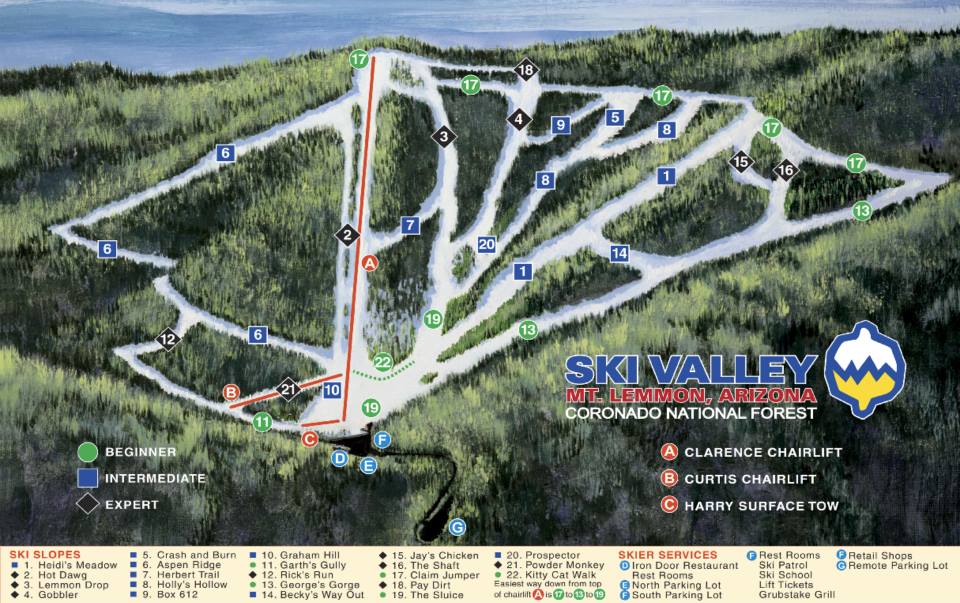
Sitting at latitude level 32.45, Mount Lemmon Ski Valley is the southernmost ski resort in the United States. The resort is located on the slopes of Mount Lemmon in the Santa Catalina Mountains just north of Tucson, Arizona, and roughly 110 miles north of the Mexico border. Mount Lemmon is part of the Coronado National Forest and has about 200 acres of skiable terrain across 22 trails. Seasons generally last from mid-December to mid-March.
The summit tops out at 9,157 feet above sea level and receives approximately 180 inches of snow each year. It is quite a diverse mountain ecologically, given the 7,000 ft. of elevation gain from the desert basin of southern Arizona. The elevation also keeps the region cool. In the summer, when Tucson temperatures are 105+ degrees, Mount Lemmon stays around 75 degrees.
The resort stays open all year for hiking and sightseeing, featuring its SkyRide lift system to get you to the top of the mountain. Dining options and a gift shop with homemade fudge sit at the bottom of the resort.
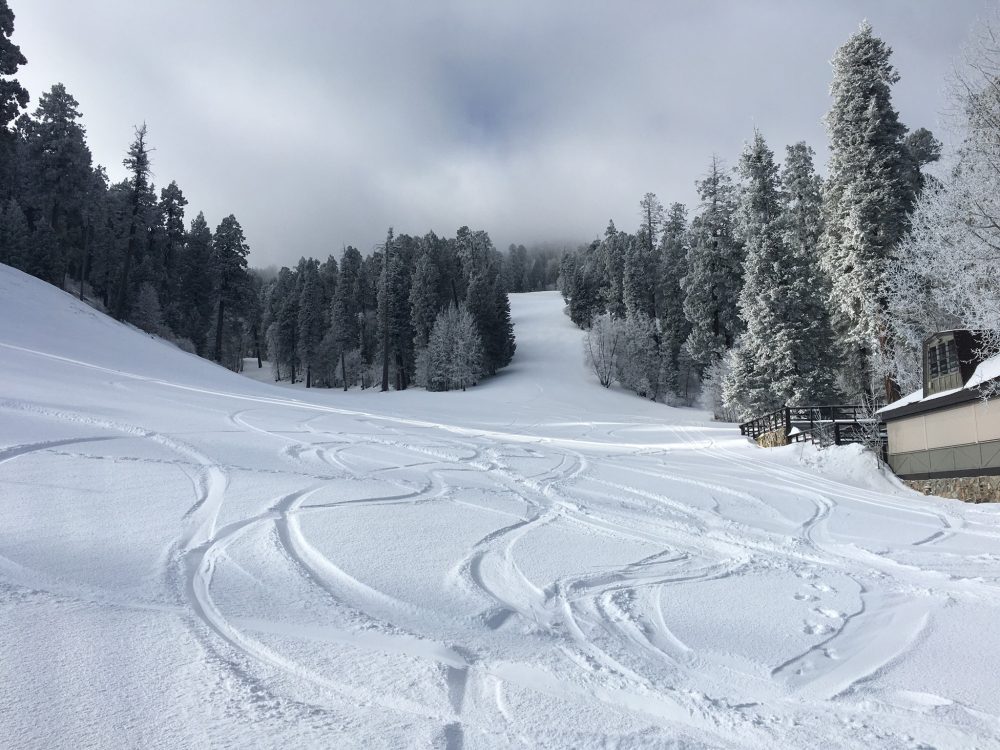
At A Glance:
- Price for adult day pass: $69 ($59 Half-Day). (Military and Senior discounts available)
- Price for child day pass: $39 ($35 Half-Day)
- Ski Hours: 10:30 AM-4:00 PM Mon, Thur. & Fri. (Weekends: 9:00 AM-4:00 PM)
- Average annual snowfall: 180 inches
- 200 Skiable acres across 22 Trails:
- Easy 29%
- Intermediate 47%
- Difficult 24%
So there you have it: these hidden gems are the closest spots to the equator where you can go skiing in the United States. Most of these resorts are in the southwest part of the country and benefit from elevations of 8,000 plus feet, but their terrain and snow quality are anything but ordinary. From popular Snow Valley, California, to remote New Mexico, these resorts bring their own unique flavor to the ski industry and show that people from all over the country share the same passion for the sport.
What are the furthest south in the east?
Well, Snowbowl sits at 35.3307⁰ N, making it further north than these 5 Southern Most Ski Resorts in the US. While it is a great mountain, it doesn’t meet the criteria for this list.
What about Arizona Snowbowl? Located by Flagstaff Arizona ( sometimes the snowiest in America) in the heart of Northern AZ. Its actually AZ’s largest abd best ski resort. Just 10 miles from town so it has plenty of amenities. Just some food for thought when representing the southwest and it’s ski scene. You also forgot the 4th secret ski area in AZ on Bill Williams mountain….. But will keep that one for us!
Thanks for the southwestern clout! Oh yeah 200″ is probably 10 feet plus short of what we pull in every year!
Sincerely
So We skier!
Most of these areas also have reasonable ticket prices.